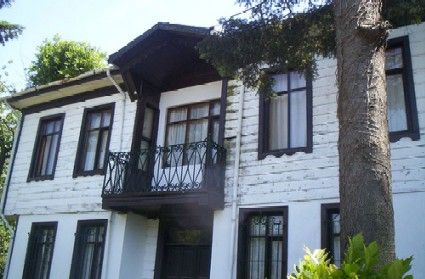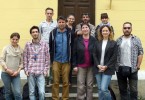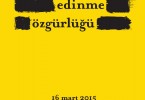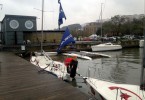Aneta Rusak
“Adampol is ending. It does not resemble the place which it was earlier. It is even hard to count how many Poles live here – approximately the number is 80. Many marriages are mixed and because of that sometimes the Polish culture is not being practiced. Usually children do not know the mother tongue nor the history of Poland,” complains Antoni Wilkoszewki, the muhtar or the headman of Polonezkoy, an interesting enclave of Polish culture located on the Anatolian side of Bosporus surrounded by forests of exceptional natural beauty.
“Our customs are celebrated like they used to be. We still have a church with a Polish priest and also when something important is happening we are all getting together and discuss in the Polish language, we do not use Turkish. We are trying to protect our identity from dying,” said WiIlkoszewski.
Polonezkoy – previously known as an Adampol – was established by Prince Adam Czartoryski (Chariman of the National Uprising Government and the leader of the Politicial Emigration Party) in 1842. During this period in history, Poland was divided into three and its territory was occupied by its neighbors, Austria, Prussia and Russia. Under the occupation the Polish population rebelled twice against the Russians in 1830 and 1863. These were called the November and January movements. The rebellion was mainly against Russia because it was the Russians who occupied most of Poland. Unfortunately, all of them failed. As a result Poland ceased to exist as an independent nation. Facing oppression and persecution, some of the Polish rebels were forced to emigrate from their country. Prince Czartoryski was one of them. He and his comrades found an asylum in Turkey, then the Ottoman Empire which supported Poles against the Russians.
However, the court of Sultan Abdulmecid discreetly agreed to have Polish settlement in Istanbul. The reason for keeping it secret was the fear of Russia. Prince Czartoryski contacted the community of Lazarist priests leased part of their land where Polonezkoy is located today. Prince Czartoryski’s representative in Istanbul,Michal Czajkowski coordinated the settlement of the Polish community in Adampol. First only former soldiers were allowed to settle on this new land. One condition was that they should belong to the Catholic Christian faith. Later civilians joined them. It was June 1842 when the first settlers arrived.
During the occupation the village was a “small Poland” when the real Poland had ceased to exist due to foreign occupation.
“We are in an extraordinary situation. Poland is our fatherland, but Adampol on the Bosporus is like Poland with all its traditions on the Turkish soil,” used to say Zofia Ryży, one of the most popular Polonezkoy inhabitants, because she spent all her live to preserve the Polish culture, explains Wilkoszewski. “She spent her whole life in Adampol. She was collecting pictures of famous Polish people and Polish books. Aunt Zosia, like we called her, was teaching us the Polish language and history of our country. Her house was always open to us,” says Wilkoszewski, the village headman of Polonezkoy. “Her last wish before she died was to make her house a memorial of the history of Adampol.” ‘Aunt Zosia’s home’ is now the name of the museum in the village.
From the beginning, the settlers wanted to shape the village after villages in Poland where they came from. They built houses like those in Poland – cottages surrounded by orchards and fences. They cherished the Polish tradition.
“The most important activity for us was hunting. It was a great event for whole village. Hunting expeditions started very early in the morning. Every man had his own shotgun and they made their cartridges themselves. They liked to compete with each other in the sense that, who was able to make the best cartridges. Many people were participating in hunting and fathers were taking their sons. We were learning about hunting ever since our young age. But not everybody liked it. My older brother went hunting only once and he said he won’t do it again. Fortunately, the woods at that time were full of animals,” explains Wilkoszewski.
Hunting had several customs in Polonezkoy. “When we shot a boar we would fire five shots in the air to inform the village what we got. The second custom was, when a young boy shot his first game, his family used to organize a big feast for the whole village to celebrate the fact that their son has become a real hunter,” Wilkoszewski says.
Other traditions that the settlers brought from Poland included a feast in the beginning of summer called dożynki. “It was always held in June. It was held to express gratitude for plentiful fruits. We used to invite folk groups from Poland, who were making a show of our national dances and music. The celebration started in the morning by going to church and praying. After that we were all getting together, dancing, eating and having a great fun.” explains Wilkoszewski.
In the sixties Polonezkoy started to transform to a tourist spot from an agricultural community.
“Farming was not profitable any more, so many people emigrated from here, mostly to Australia and Germany. We lost one third of our population. Those who were leaving were selling their land usually to the Turks, because they were paying more,” says Wilkoszewski. “The people who remained in Adampol started to turn their homes to boarding houses and hotels for tourists. Polonezkoy became a known more and more in Istanbul with people describing it as a small, peaceful paradise full of green fields, forests,” he adds.
Unfortunately, this tourist boom did not have a positive effect on the Polish tradition. Young and educated members of the Polish families have left the village to live either in Istanbul or abroad, there is hardly any hunting left, there are new building projects creeping close to the village while some Turkish families have also moved in with their various businesses.
Although retaining some of its Polish characteristics, Polonezkoy today, looks more like a Turkish resort with some Polish boarding houses, a church and a Polish cemetery, somehow inviting its curious visitor to glance at its interesting past, resonant of 19th Century Europe and the Ottoman Empire.







